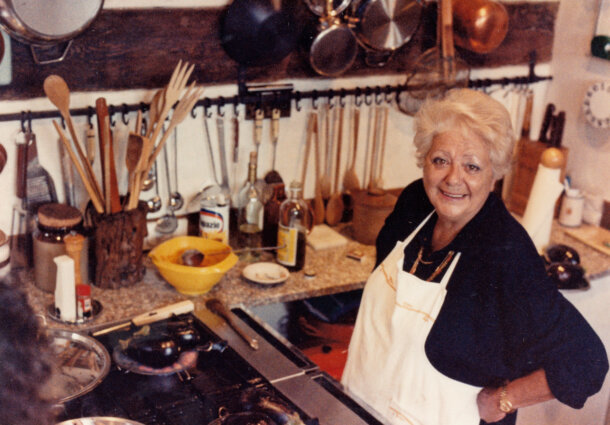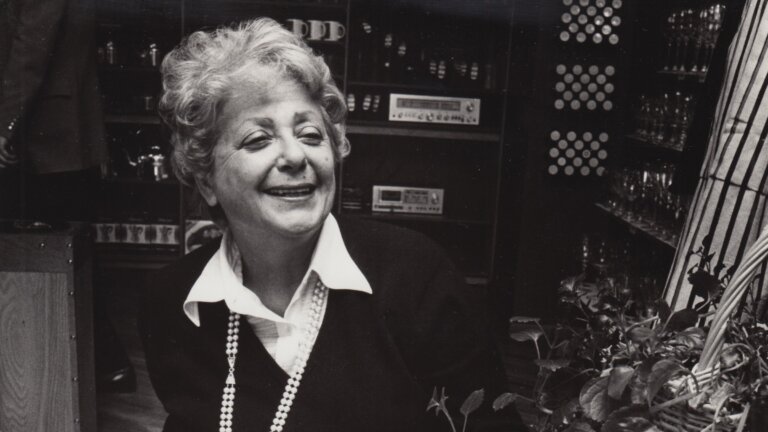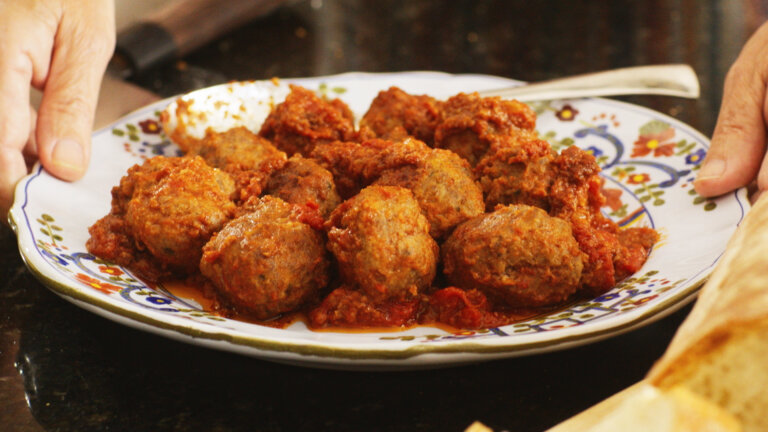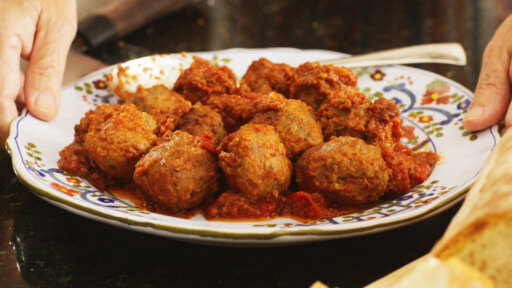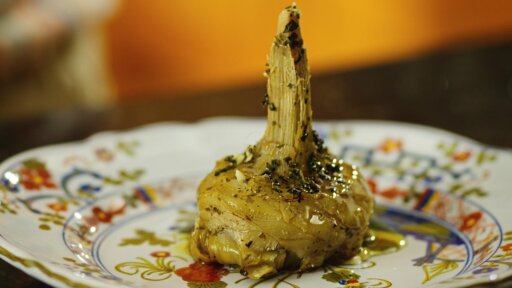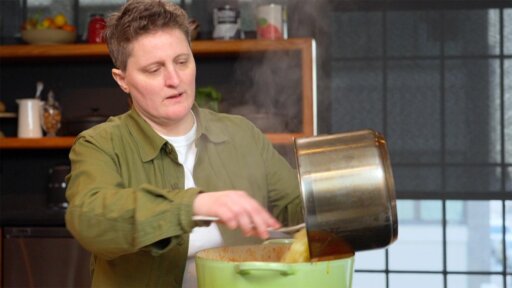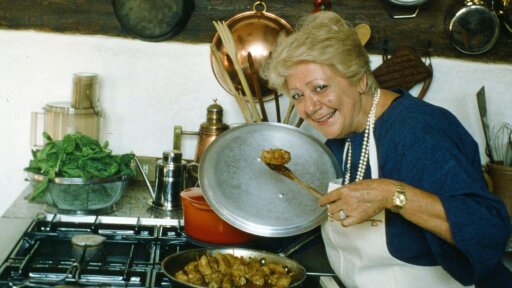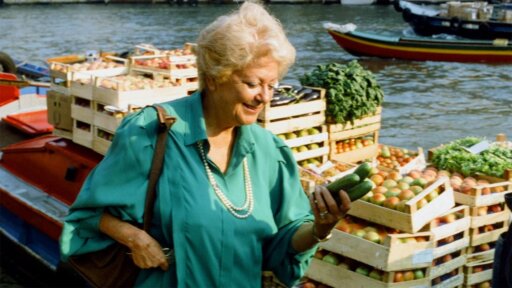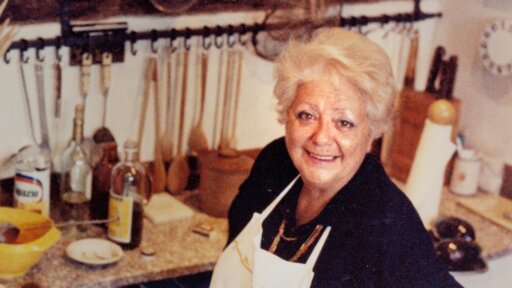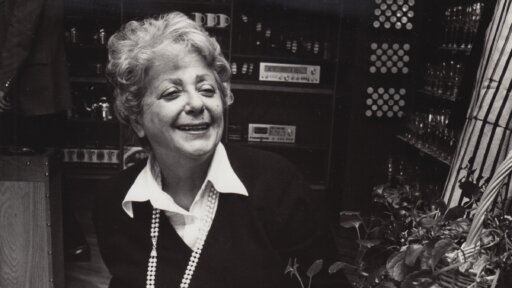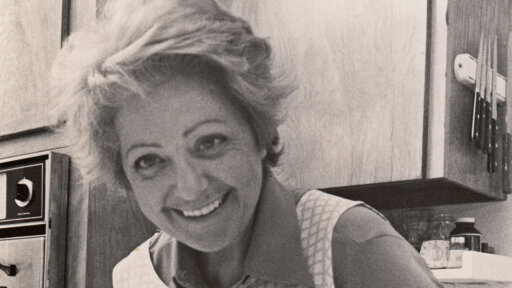In 1973, the Italian cookbook author Marcella Hazan published a recipe that was heard ‘round the world.
It was a pasta sauce, from her first book “The Classic Italian Cook Book,” with just three primary ingredients—vine-ripened tomatoes, good butter and one medium-sized onion. The instructions couldn’t have been simpler. Dump, season, simmer. But the most important step was the final one: Discard the onion before tossing the sauce with pasta.
Of all the recipes Hazan published in her illustrious 40-plus year career, perhaps none capture the essence of her culinary philosophy better than this sauce. It’s the idea that “what you keep out is just as important as what you put in,” as was written in her last book, “Ingredienti,” published posthumously in 2016 by her husband, Victor, who translated all her works.
The phrase and the recipe embody an iconic figure who, in simply being who she was, left an indelible mark on the way Americans eat, cook and think about Italian food.
Before Hazan published her first cookbook, Italian cuisine in America was in a state of flux, shedding its aura of dubious otherness rooted in the xenophobia that flourished as Italian immigration, mostly from the southern part of Italy, surged in the late 19th century. Popular dishes like spaghetti and meatballs or chicken Parm—what we now call red sauce cuisine—were in their final stages of assimilation into the American culinary canon, no less foreign than hamburgers and hot dogs.
“Red sauce cuisine, the tradition of foods closely linked with tomato-based sauces, grew in popularity, first as an acceptable ethnic food before eventually losing the connotation of ethnicity altogether,” writes Ian MacAllen in his book “Red Sauce.”
But the so-called Italian dishes in supermarkets and on the menus of national chain restaurants bore little, if any, resemblance to the food back in Italy where spaghetti was spaghetti, meatballs were meatballs, and the two had never met on one plate. Italian American food was something else entirely. It was a translation of old taste memories into new realities, shaped by the ingredients and aspirations available to immigrants in the New World. It had been commercialized by immigrant entrepreneurs who commodified their culture, which in turn afforded stability and a real shot at the American Dream.
In a refrain that rings true for all newcomers to this land, Italian Americans did what they could with what they had.
By the 1970s, appetites began to shift. America’s middle class was growing, along with its desire for a more powerful social currency. Waiting in the wings was a nascent foodie culture. Culinary expertise quickly became the new language of the moneyed, a signal of sophistication. In the realm of Italian food, that meant distinguishing from inexpensive, mass-produced foods with cuisines of authenticity, or the idea that the cuisine and culture of Europe’s Italy was somehow more authentically Italian than the food of Italian immigrants.
In hindsight, there is no truer saying than “right time, right place.” Marcella Hazan met the moment, with aplomb. The restaurant chef had not yet reached God-tier status, it was still the era of the home cook, fueled by The New York Times food section, and Hazan spoke the language of authenticity in Italian cuisine better than anyone else at the time, especially with her rich Italian accent.
Hazan grew up in the town of Cesenatico in Emilia-Romagna, known today as Italy’s food valley, a gourmet haven with over 40 regionally protected delicacies (the most of any region in the world) like salt-cured quarters of Parma ham and aged wheels of Parmigiano-Reggiano. Food was always a part of Hazan’s life, but her life didn’t center around food until much later. Middle-age, in fact, when she took up hosting cooking classes at her New York City apartment in 1969.
From her cramped home kitchen, Hazan captivated audiences with visions of the regional foods of Italy. “A vegetable soup can tell you where you are in Italy almost as precisely as a map,” she wrote in “The Essentials of Classic Italian Cooking.” She taught people that butter was prevalent in the north, where she had lived, while olive oil was a signature of the south. She spoke dreamily of Italian specialty markets, of cooking with local ingredients, and she introduced Americans to once niche foods like balsamic vinegar and real mortadella. “Imitation is the sincerest form of flattery but, in the case of mortadella, it has come closer to character assassination,” she wrote.
Hazan wasn’t the only one attempting to change public perception of her home cuisine. Around the same time, women like Joyce Chen and Madhur Jaffrey had published their own cookbooks demystifying Chinese and Indian cuisines, respectively. They, too, railed against monolithic takes that whittled down centuries of history into a few over-sauced dishes on a restaurant menu.
Books like “The Classic Italian Cook Book” may have been a response to the prevailing narrative of the time, but they also symbolize an important moment of empowerment and agency among immigrant women in America. Hazan had accompanied Victor to New York to become a housewife, even though she had numerous degrees and hated the thought of such a dull, isolated life. Rather than quietly assimilate, she leveraged her ethnicity and domesticity to create a meaningful and successful career, one that ultimately sustained herself, Victor, and eventually, their son Giuliano.
For as long as she could, even as women were joining the workforce en masse, Hazan stood firm in favor of the home cooked meal, made from scratch. Lunch was sacred and no meeting could change that.
Hazan’s stern dedication to tradition in the face of modernity was not iconoclasm, it was a product of the values she absorbed as a young woman who lived through WWII under a fascist government. Where cooking with a few simple ingredients was not a romantic sentiment, it was the only way to survive. And where access to regional and seasonal ingredients was not a matter of privilege, but the way in which society had been structured.
In being so steadfast in her ways, Hazan was ahead of her time as a cook. She was a precursor of the slow food movement that swept America in the late 1990s. She focused on vegetables as Americans were growing more mindful of their health (aided by the 1978 Seven Countries Study, with its favorable conclusions about the Mediterranean diet). She mastered a style of cooking that prized directness of flavor and “taste free of affectation,” as she put it in her 2008 memoir, “Amarcord,” which, to this day, is what some of the world’s best chefs spend their entire careers chasing.
At the encouragement of those around her, especially her husband Victor, Hazan turned an innate talent for cooking into a global platform. She published six cookbooks and taught an eclectic cross-section of curious cooks and Hollywood celebrities in classrooms across New York, Bologna and Venice. The work gave Hazan access to the inner circles of New York’s media elite and beyond, taking her to countries like Japan and Hong Kong.
When people speak of Marcella Hazan, they often compare her to the all-time greats in other fields, like the boxer Muhammad Ali or the singer Ella Fitzgerald—auteurs who redefined and elevated their craft. It’s a fitting analogy because Marcella Hazan changed Italian food in America. Even though we live in a new, almost unrecognizable, food-obsessed era, her ageless wisdom is still there for younger generations to re-discover, as they are doing online in droves. These enterprising cooks and creators who broadcast their efforts are quite literally taking a page from Hazan’s book as they peel open a can of San Marzano tomatoes and then dump, season and simmer.


